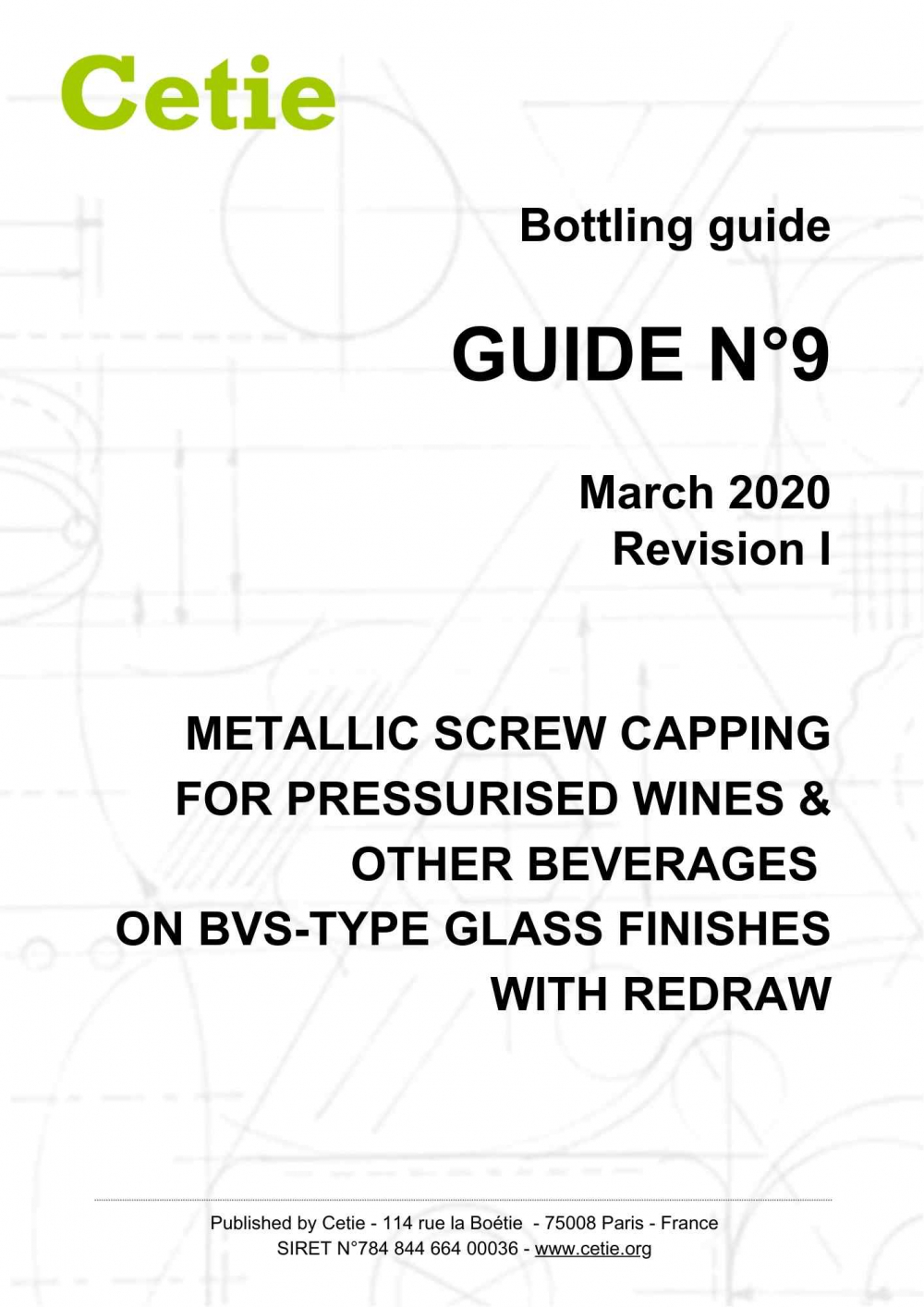Metallic screw capping for pressurised wines & other beverages on BVS type glass finishes - With redraw
Scope of application
Both the cap and the bottle must be foreseen for the application, subject to a written agreement between the cap supplier, the bottle supplier, and the filler.
It remains the responsibility of the filler to ensure that the package is appropriately designed for the product bottled and foreseen conditions of storage and transport as well as to avoid risk of injury on opening.
Attention is drawn to the necessity to observe special precautions for carbonation levels above ~3 g/l CO2 or a pressure exceeding 6 bars.
This guide does not cover the use of MCA-type pressure caps or smaller diameter BVP-type caps/finishes used with redraw.
The Guide defines:
- The functions of the closure and its limits,
- The specifications of each of the components related to each other, to fulfill the global functions within the determined limits.
Table of contents
1 Introduction
1.1 Scope
1.2 Units
1.3 Checking calibration of measuring equipment
2 Closure system for wines
2.1 Presentation
2.2 Functions of the closure system
2.3 Headspace requirements
2.4 Internal pressure
3 Glass bottle finishes
3.2 Bottle
3.3 Functions
3.4 Additional requirements
4 Caps
4.1 General presentation
4.2 Aluminium caps shells
4.2.1 Functions
4.2.2 Description
4.2.3 Additional specifications
4.3 Liners
4.3.1 Functions
4.3.2 Description of different liner types
4.3.3 Choice of the liner
5 Inspection of components
5.1 Glass bottles
5.2 Caps
5.2.1 Pre-consumption manual inspection
6 Equipment and application conditions
6.1 Introduction
6.2 Storage and Application Conditions
6.3 Cap application
6.4 Equipment
6.4.1 Initial checks
6.4.2 Initial checks of cap pick-up device
6.4.3 Operating cycle of the capping head
6.4.4 Initial checks of capping head
6.4.5 Setting equipment
6.4.6 Machine specifications
7 Checking of capping during production
7.1 Recommended frequency
7.2 Checking the top load force
7.3 Visual checking of closures
7.3.1 Short skirt closure
7.3.2 Long skirt closure
7.3.3 Checking of liner compressibility
7.3.4 Checking of removal torque and strip torque
7.3.5 Verification of the pressure resistance of the closure
7.4 In-line optical inspection
8 Storage and transport of bottled products
8.1 Storage
8.2 Transport
8.3 Handling
9 Information to be recorded
9.1 Filling
9.2 Inerting
9.3 Capping
9.4 Verifications
10 Capping defects
11 Bibliography
12 End of life
13 Referenced documents
13.1 Standards
13.2 Cetie
14 Document history
Annexe A— Contributors to the first edition of 2016
Illustration index
Figures
Tables
First edition : 01/2016
Revision I : 03/2020
Contributors
Document under responsibility of working group:
This joint group aims to coordinate the production of documentation at the junction of glass container production and closure application. It accompanies the development of documentation for glass containers for different types of closures including, but not limited to, aluminum screw caps, crown caps, and their components (liners). This joint group also provides an opportunity for cap and liners manufacturers to open discussions on specific work items of the permanent glass groups
